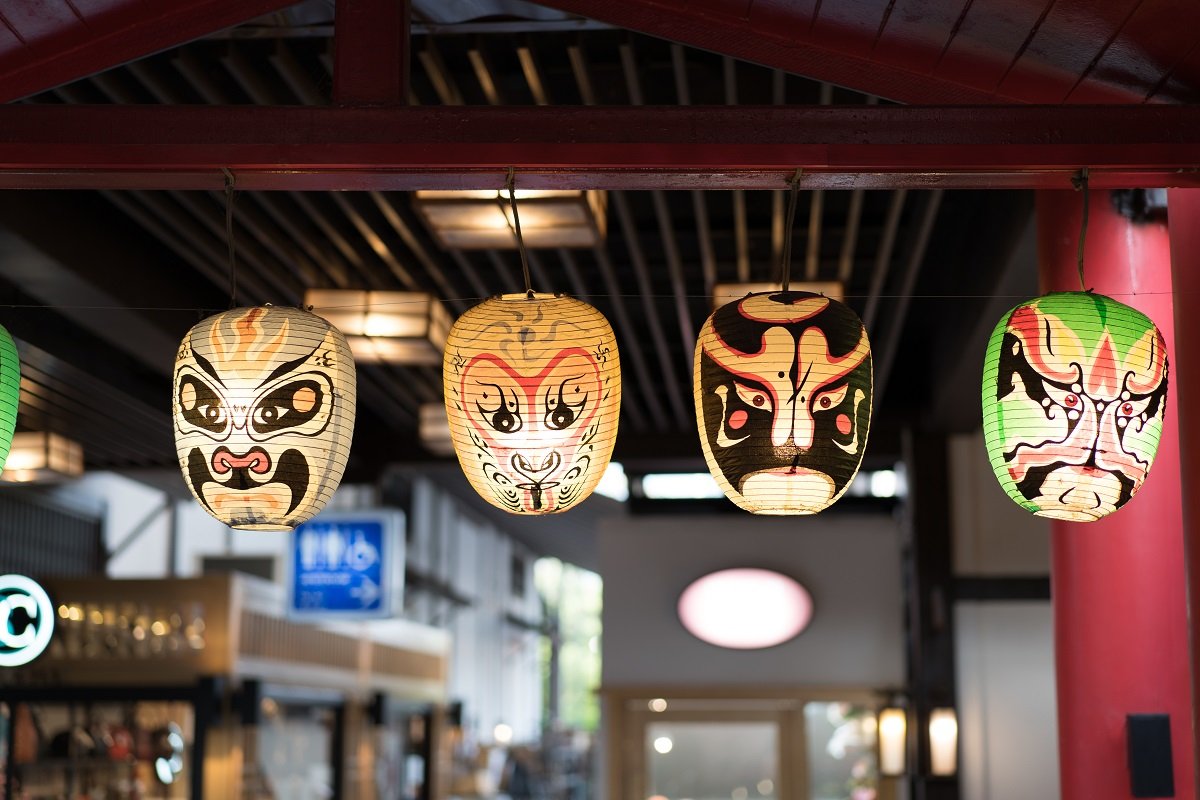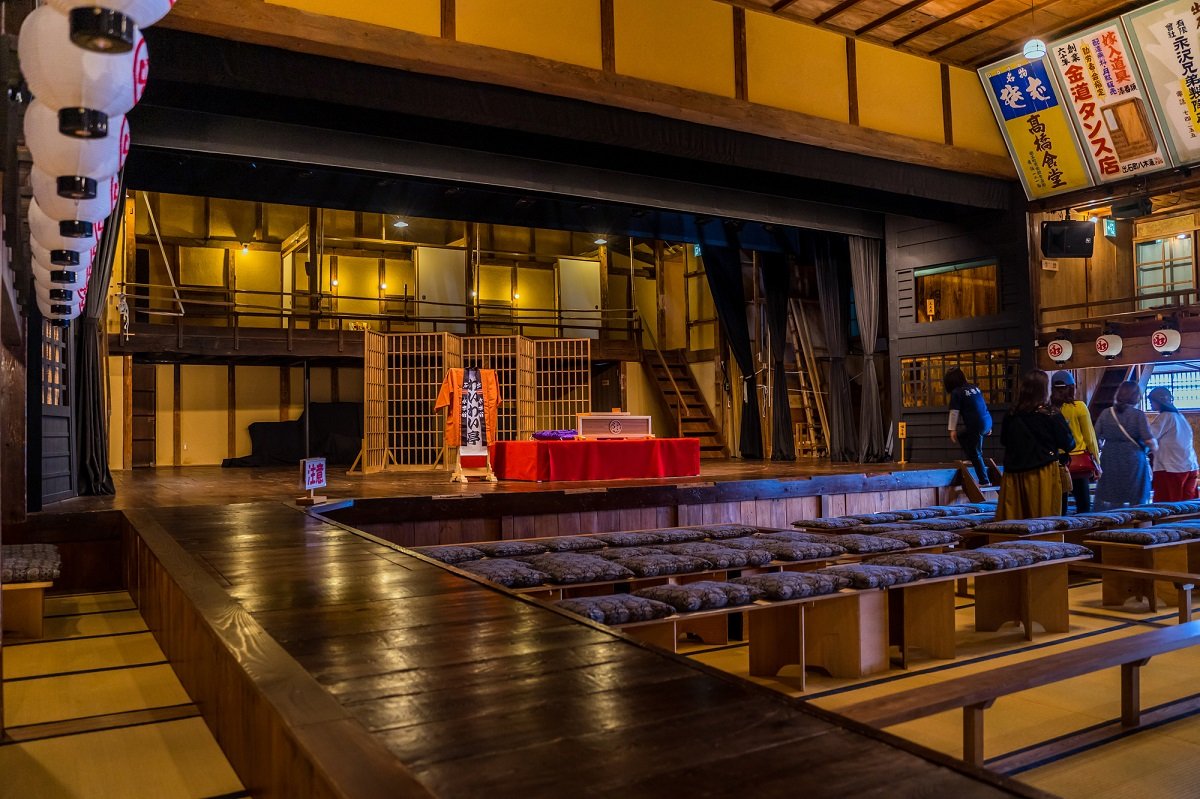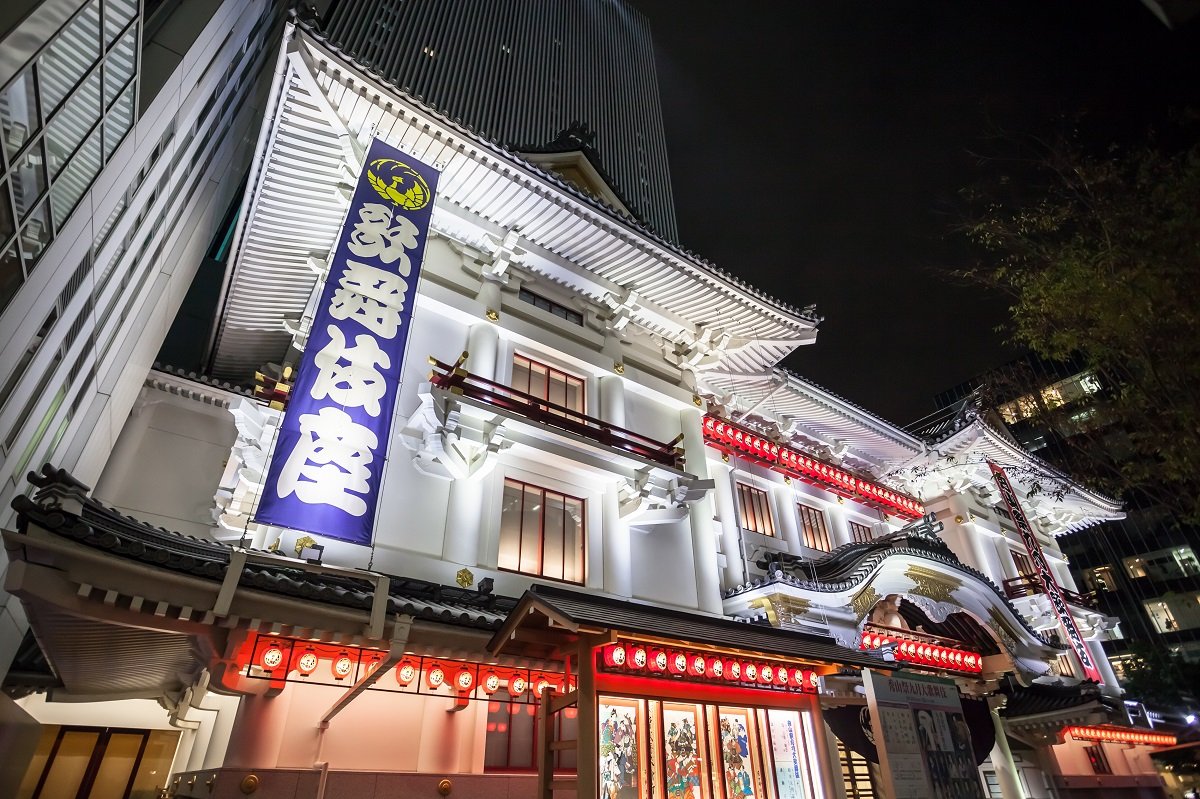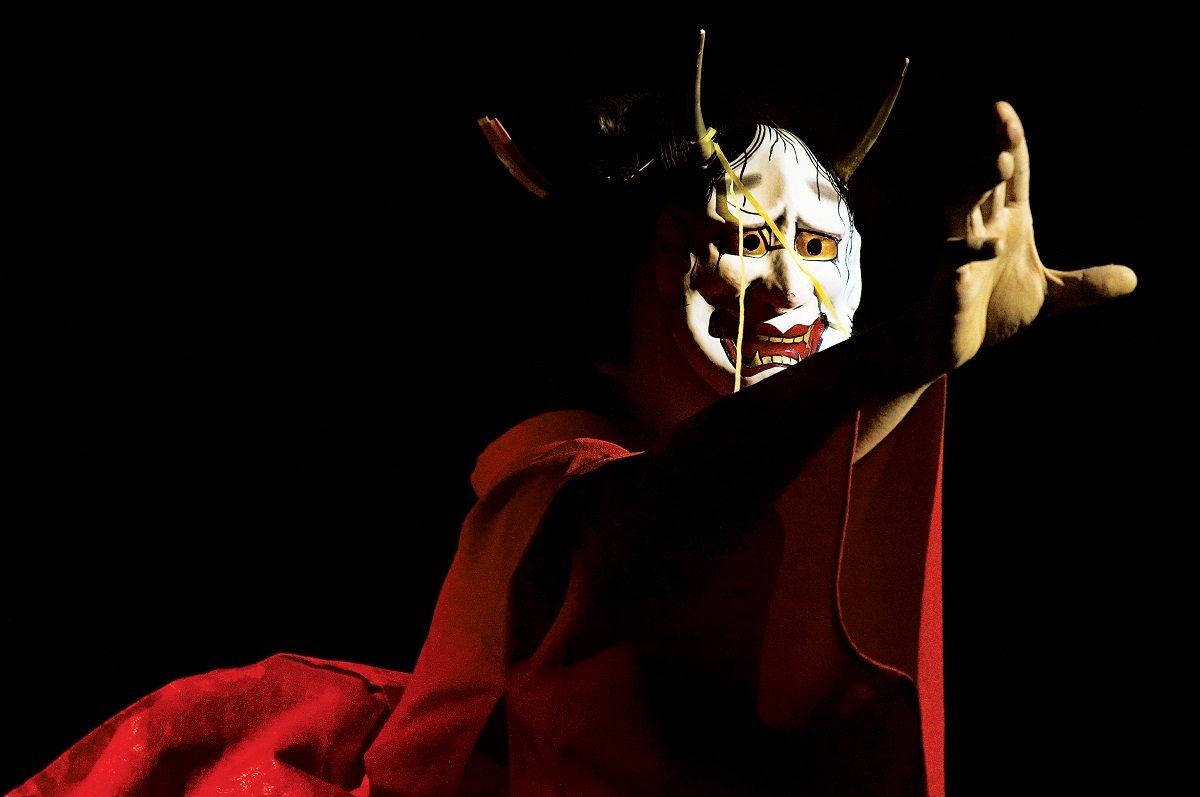Kabuki is one of Japan's most representative traditional performing arts, and is popular overseas as well. If you live in Japan, it's something you should see at least once, but it'll be even more enjoyable if you have some basic knowledge of Kabuki beforehand as an introduction.
So, in this article, we will explain the basics, origins, and history of Kabuki, and also introduce recommended performances and tips for enjoying Kabuki for those attending the Kabukiza for the first time! We hope you will find this useful as an introduction to Kabuki.
The Basics of Kabuki

First, we will explain the basics of Kabuki, such as its origins, stage names, and genres.
The origins of Kabuki
The origins of Kabuki date back approximately 400 years, to a dance performance held in Kyoto by a troupe of shrine maidens calling themselves Izumo no Okuni, shortly after the establishment of the Edo Shogunate.
At the time, Okuni's dancing in men's clothing was hailed as the dance of the "kabuki" (flashy and unusual), and it gained popularity nationwide. It is interesting to note that although women are now prohibited from performing on the Kabuki stage, it originally had female origins.
Kabuki theater name
Have you ever heard chants like "Naritaya!" or "Otowaya!" from the audience at a Kabuki performance? These are called "yago" (store names), and they have a similar meaning to the style that each Kabuki actor inherits.
When a favorite actor appears in a Kabuki performance, it is common to call him by his stage name rather than his name, and among stage names, "Naritaya" has a long history and is highly respected in the Kabuki world.
There are four genres of Kabuki
Although it is generally called "Kabuki," there are several different types of performances, each of which can be divided into the following genres.
・Jidaimono (period pieces): To us, all Kabuki plays can be called "jidaimono," but in Kabuki, "jidaimono" refers to period dramas for those who lived in the Edo period. Plays that deal with historical figures and events from before the Edo period are classified as jidaimono.
・Sewamono (domestic drama): In contrast to jidaimono, sewamono were "modern plays" for people in the Edo period. Sewamono are characterized by plays that are rooted in the culture and lives of the common people and townspeople of the time.
・Shin-kabuki: Works created after the Meiji period are called "Shin-kabuki" and are classified as a different genre from jidaimono and sewamono.
・Shosagoto: This refers to works that mainly feature dance accompanied by Nagauta or other musical instruments.
What are "niramie" and "mie"?
In Kabuki, "mie," sometimes called "taking a big pose," is a performance technique used in important scenes that are the highlight of a play. It is a technique unique to Kabuki, and is said to have developed in order to attract the attention of the audience at a time when lighting technology such as spotlights did not exist, by remaining still in a beautiful and gorgeous pose.
Among the mie poses, the technique known as "niramii" is passed down only to the family that inherits the Naritaya name. The sight of the glaring face without focusing the eyes is spectacular, and it is a special gesture that is said to ward off evil spirits.
This is my first time seeing Kabuki. What performances would you recommend?

If you are going to see Kabuki for the first time, here are some recommended plays that even beginners can enjoy:
"period piece"
Recommended period pieces include "Yoshitsune and the Thousand Cherry Blossoms," set during the Genpei War, and "Kanadehon Chushingura," which is set in the famous Chushingura story.
"Separate Life"
Examples of domestic dramas include "Tokaido Yotsuya Kaidan," which is based on the familiar Yotsuya Kaidan story, and "Sannin Kichisa Tomoe no Shiranami," which depicts the human relationship between a parent and child.
behavior
If you enjoy Kabuki dance, we recommend "Shunkyo Kagami Jishi," famous for its dance with long white hair, and "Kyoganoko Musume Dojoji," which is a spectacular piece with gorgeous props.
Other popular productions include "Super Kabuki," a collaboration with modern anime works, and "Kanjincho," "Shibaraku," and "Sukeroku," from the "Kabuki Juhachiban" (18 Kabuki plays), the Ichikawa family's specialty.
If you want to see Kabuki, head to the Kabukiza! How to enjoy the Kabukiza

Once you have a basic understanding of Kabuki, it's time to actually watch a Kabuki performance. Here, we will explain the key points to enjoy Kabuki at the Kabukiza Theatre.
The best seats for your first Kabuki performance are the "One-Act Seats"
Usually, a Kabuki performance consists of three to four acts, with breaks in between, but there are seats called "hitomakumiseki" where you can watch just one act.
Single-act seats are only available on the day of the performance, but are attractively priced at around 1,000 yen. You can choose your preferred time and performance from the Kabukiza's performance schedule. However, please note that seats where you can sit and watch the show are only available in limited quantities, so there are often long lines when purchasing tickets on the day of the performance.
When watching a regular performance, there are first-class box seats, first-class and second-class seats, and third-floor seats, but the price for a first-class box seat is around 20,000 yen.
Eating and drinking are permitted during intermissions (short breaks)
Kabuki performances have short breaks called "makuen" during which you can enjoy a meal or drink at a Japanese restaurant inside the Kabukiza. You can also buy bento boxes and sweets to eat and drink at your seat.
Don't miss any lines with the "Earphone Guide"
If you're not familiar with Kabuki, we recommend using the "earphone guide," which provides an easy-to-understand audio guide to the contents of the performance. Advance reservations are required, so if you would like to rent one, it's a good idea to inquire before purchasing your ticket.
There are no special rules such as a dress code
Some people think that when watching Kabuki, you should wear a kimono or formal attire, but there is no particular dress code for Kabuki. Generally, you can wear your everyday clothes, but if you're worried about standing out, simple, chic, and comfortable attire is best.
summary

Kabuki, a representative traditional Japanese performing art, was developed during the Edo period and is popular overseas. It has unique terminology and styles, such as yago (house name) and mie (pose), and there are several genres of performances, but there is basically no dress code and you can even see just one act. Even beginners can enjoy Kabuki, so if you have the opportunity, be sure to give it a go.
Mini lesson corner
Learn about Japan and the Japanese language!
"What exactly is Kabuki?"
This article has been partially re-edited by KARUTA from an article originally published on "Nihongo Biyori."
Any unauthorized reproduction or use of the contents, text, images, illustrations, etc. of this website is strictly prohibited.
